 - page 113-115
-
- Next to experience of the Feelings, is
experience of the Signs. These are the
recognized expression of human and other
sentient beings, by Voice, Movement, Gesture,
and Demonstrations of every kind.
-
- Probably the foremost place among the
associated signs of feeling should be given to
the voice. One reason is that we are at all
times affected by our own voice, whereas we do
not see our own features. Another reason may be
that the shock of a sound, being a transition
from silence, is more impressive than a mere
variation in the appearance of what already
occupies the eye. In the third place, the
emission of sound is the most wide-spread of all
the significant signs of the mental states of
animals and human beings.
-
- The Visible Movements are impressive
according to their suddenness, their rapidity,
their extent. Of many of our own movements, we
are sufficiently conscious to connect them with
our states of feeling. The start, the bound, the
run,-under the emotions of sudden joy, anger, or
fright,-are distinctly felt by ourselves; and
are associated with the feelings, so as to give
a key to the states of other men. What we fail
most in is the expression of the features,
together with those changes of colour and
complexion that accompany the mental moods.
-
- In this situation, we are assisted by
another class of indications of feeling that are
not properly speaking the expression of feeling,
but are still the medium of knowing the states
of others. These are the known causes,
collaterals, and consequences of our various
pleasures and pains; including all the outward
agencies and all the proceedings that follow.
The sight of a hot coal in contact with the skin
suggests the pain of a burn; and, when this
happens to anyone in our presence, we know their
acute suffering; and seeing the movements of the
features at that moment, we have the means of
knowing what are the signs expressive of acute
pain. So we interpret the operation of pleasure:
we know the pleasure of sweetness in connexion
with a piece of sugar; we mark the alterations
of the countenance in the child or other
unsophisticated partaker of the delight, and
thus obtain indirectly a knowledge of the
connexion of pleasure with the movements in
smiling.
-
- Only by this circuitous method can we
interpret changes of the countenance aud
complexion-the crimson blush, the pallor, the
brightening or the suffusion of the eye.
-
- Since we connect, at first hand, vocal
sounds with feelings, we can use the indications
of sound to learn the additional signs of
visible expression. A cry of pain calls our
attention to the pained individual; we already
know the state of mind, and we farther watch the
movements and gestures, and learn ti connect
these with the same state.
-
- Another medium for learning the Signs of
feeling is given in the gregarious situation of
the sociable animals. Creatures living together
are affected by the same causes, and take on the
same feelings. In this way, each one, while
conscious of the feeling, witnesses its
expression in the rest. The pleasures of
abundant meals, the excitement of the chase, the
terror of being preyed upon, are all felt and
expressed in company; the coincidence of the
feeling and the language cannot be mistaken; and
there inevitably follows an association between
the two.
-
- The rate of associating growth between the
Feelings and these various Signs follows the
laws applicable to the case. Besides repetition,
there are to be taken into account, the
intensity of the feelings on the one hand, and
the impressiveness of the signs on the other. As
regards the signs, they should by their quality,
impress themselves on the senses; they should
also be distinctive. The sharp cutting sound of
a cough, and the sound of a person talking
hoarse, are known to to be contagious; and the
probable reason is the intensity or
expressiveness. The contagiousness of the
yawn may be due to the same cause. Laughter
is more powerful than either; combining, as it
does, strong sensations both of sight and of
hearing
-
- The connecting of Feelings with Signs
depends upon the Intellectual forces on the
whole. A feeble intelligence fails in this as in
other branches of acquirement. Hence one reason
for man's being superior in sympathy to the
brutes; also for the more sympathetic character
of the higher races, and of the most intelligent
individuals. This is qualified, but not
contradicted, by cases where the intellectual
forces are concentrated on other subjects; a man
may have great intellect and yet not expend it
in either multiplying or deepening associations
with the Feelings.
-
-
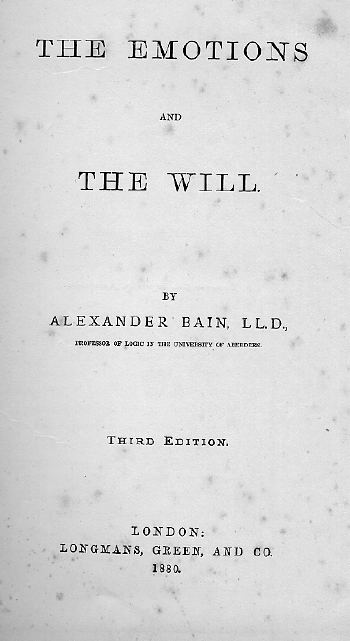 -
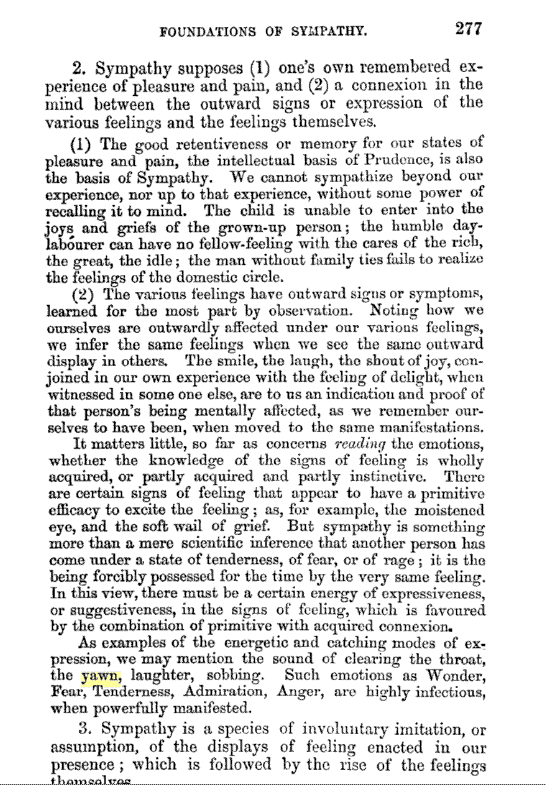 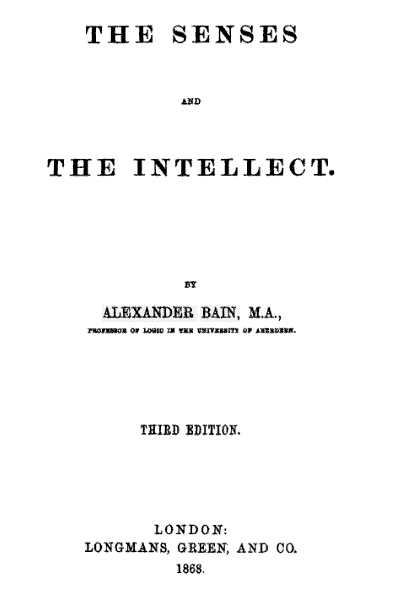 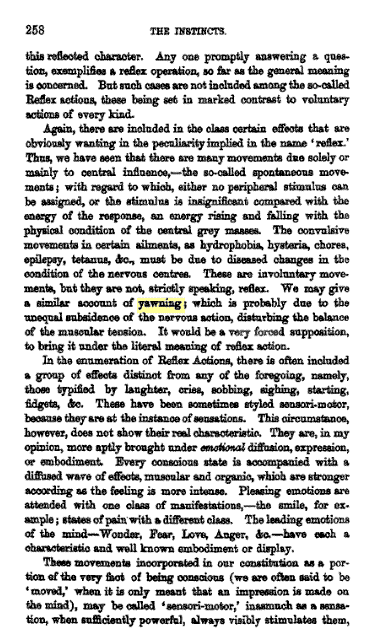 -
Mental and moral science
- Appendix p67
-
- Instinctive beliefs (Fundamental laws of
belief Dugald Stewart)
-
- The other Laws of Belief resemble the axioms
of Geometry in two respecte: let, they do not
enlarge our knowledge; and secondly, they are
implied or involved in all our reasonings.
Stewart advances two objections to the
phrase-principles of common sense: it
designates, as principles, laws of belief from
which no inference can be deduced; and secondly,
it refers the origin of these laws to common
sense, a phraseology that he considers unfit for
the logician, and unwarranted by ordinary
usage.
-
- Stewart defends the alleged, instinctive
power of interpreting certain expressions of the
countenance, certain gestures of the body, and
certain tones of the. voice. This had been
resolved by Priestley into associated
experiences: but, for the other opinion, Stewart
offers two reasons: (1) Children understand the
meaning of smiles and frowns long before they
could remark the connexion between a passion and
its expression. (2) We are more affected by
natural signs than by artificial ones. One is
more affected by the facial expression of hatred
than by the word hatred.
-
- Another instinct adduced by Stewart, is what
he calls the law of Sympathetic Imitation. This
is contrasted with the intentional imitation of
a scholar; it depends "on the mimical powers
connected with our bodily frame." If we see a
man laughing or sad, we have a tendency to take
on the expression of those states. So
yawning is contagious. "Even when we
conceive in solitude the expression of any
passion, the effect of the conception is visible
in our own appearance." Also, we imitate
instinctively the tones and accents of our
companions. As we advance in years, this
propensity to imitation grows weaker.
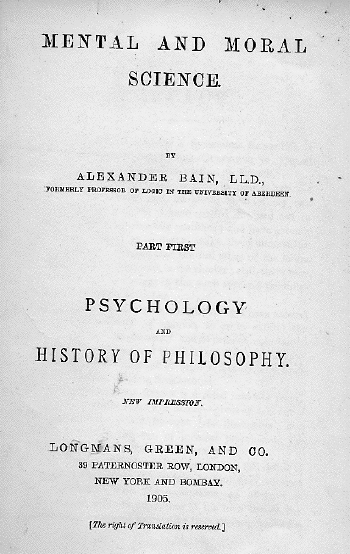
-
|






